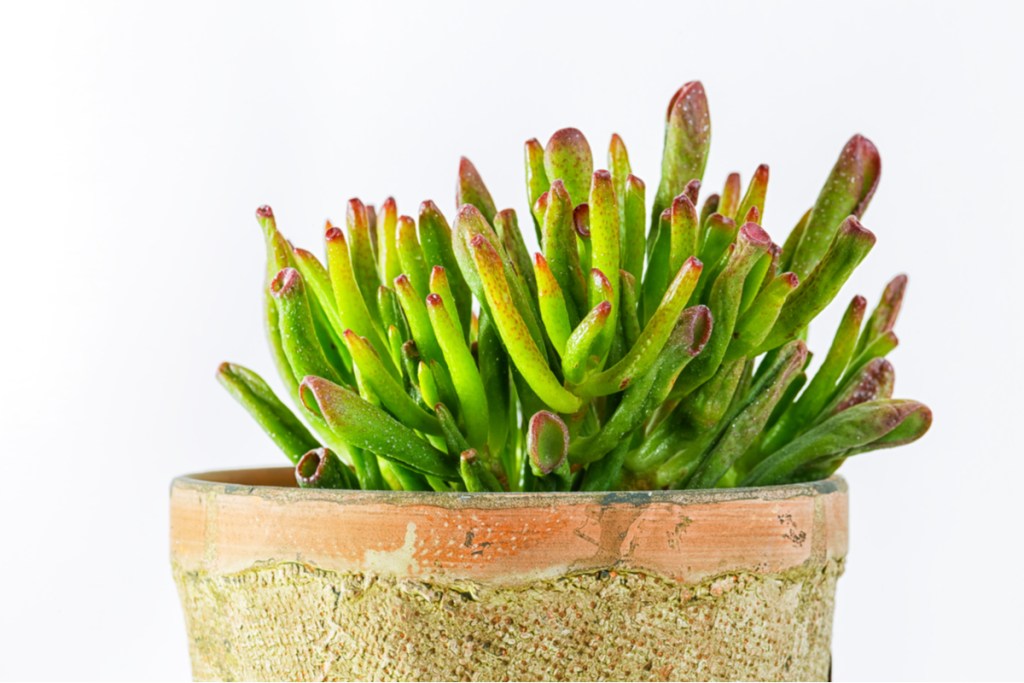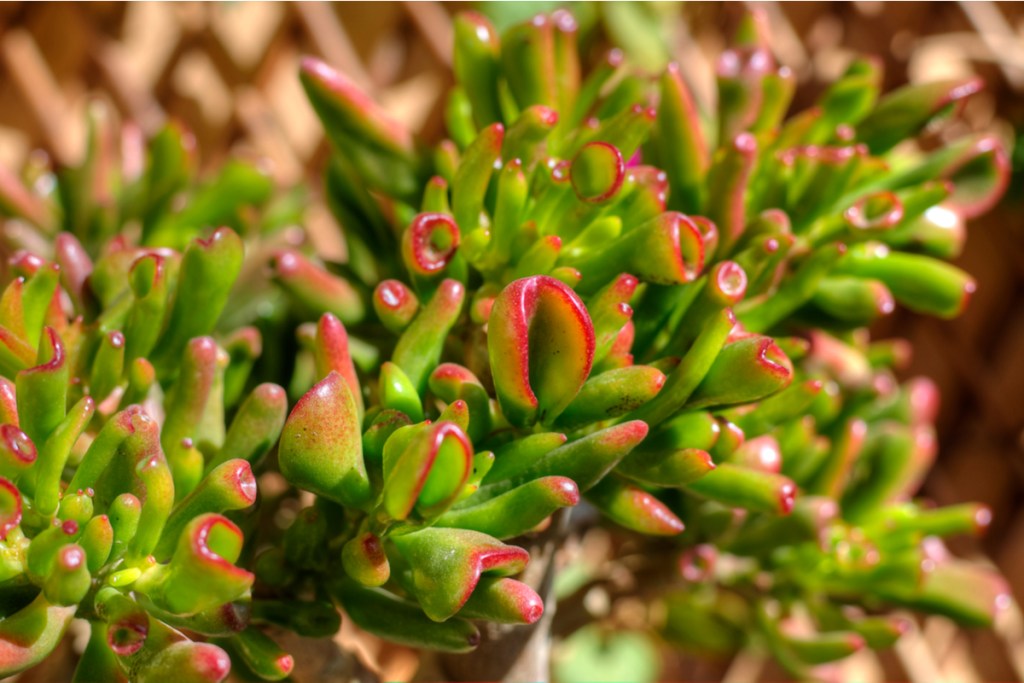Red coral succulents are part of the Crassula genus (the same one that the jade plant belongs to). From perennials to woody plants to shrubs, Crassula plants span 350 different species. While most of them are small (serving as container plants or ground cover), there are some larger ones that make beautiful additions to any outdoor garden. The red coral falls into both groups. In containers, they can be relatively small; however, when grown outdoors—in the right conditions—they can get quite large.

What are red coral succulents?
Red coral succulents have beautiful, bright green to dark green oddly-shaped leaves with pink edges. Under the right conditions and care, they’ll bloom white flowers during the growing season. The red coral succulent makes for a wonderful indoor container plant, so long as you’re willing to accommodate it’s three-foot-tall mature size.
These plants grow slow and at their own pace, so be patient. You likely won’t see ten inches of growth in a year, and that’s perfectly normal. They’ll need a lot of space eventually, but you won’t have to worry about finding a home for it the year after you buy it (if it was bought young). Keep in mind, too, that this plant is toxic to both cats and dogs, so it should live out of reach from your furry friends!
Can they be grown outdoors?
Although red coral succulents look beautiful in containers, they can be grown outdoors in the right conditions. They like warm environments and lots of light, so they’re only viable outdoor garden plants between hardiness zones 10a to 11b. In colder climates outside of this range, it’s recommended you grow it indoors for it to stay alive. In either environment (outdoors or indoors), a red coral succulent that receives the proper care will be as healthy and happy as it can be.
Caring for your red coral succulent
Like most warm-loving succulents, red coral plants don’t handle cold well and will likely experience some kind of shock (or even death) if exposed to too low temperatures. Maintaining temperatures above 30 degrees Fahrenheit at all times is essential to survival.
Light requirements
When grown outdoors, a majority of plants in the Crassula species need a bit of shade during the hottest parts of the summer to avoid overheating or getting burned. Be sure to plant them in an area (if you’re in one of the ideal growing zones) that receives full sun in the morning but has afternoon shade. In a container indoors, however, you simply need a spot that receives bright indirect lighting throughout the day.
Water requirements
Red coral succulents are gorgeous, unique plants that will thank you with even more beauty when you care for them properly. This, unfortunately, means diligent monitoring and watering. Like most succulents, the soak and dry method is ideal (and make sure that it’s in a pot with good drainage so any excess can seep out!). Red coral plants die easily if they’re overwatered, so if you’re ever unsure, wait a couple days before you give it a drink. It’s better to err on the side of caution than risk getting its feet too wet.
Pests and diseases to watch out for
Most Crassula species have common problems with the same pests. So, for example, if you already own a jade plant, you’ll have a better idea of what to look out for on your red coral. These pests include aphids, mealybugs, and spider mites, which are more common on indoor-grown red coral than ones grown outdoors.
To clear up any pest problems with these plants, you should always try using neem oil or other horticultural oils first before attempting to use an insecticidal soap.

Propagating your red coral
If you’ve propagated plants before, then chances are you’re familiar with the different types of methods. Propagating a Crassula red coral isn’t much different than other types of succulents like aloe and jade. You can propagate red coral through leaves, cuttings, or offshoots that grow naturally.
From leaves/cuttings
Propagation through this method should only be done with healthy leaves, as that increases the chance that the new plant will grow and thrive. Leaves should be taken gently from the plant as close to the stem as possible without causing damage to either part. You want to make sure you get the leaf without leaving any behind on the stem, as that’s the most viable it can be for growing a new plant.
From there, let the fresh end callous over for a few days before placing it on top of some well-draining soil. You should water when the soil dries out, but not too often as you don’t want to rot the leaves.
From offshoots
Offshoots are one of the easiest ways to propagate plants, and fortunately red coral succulents have them! Offshoots are exactly what they sound like: new plant shoots that grow off of the mother plant, usually at the base. Because red coral plants grow slow, though, you’ll have to wait at least a few years—if not longer—for a baby plant to start growing off the parent.
When there’s an offshoot large enough to remove (usually with a decent amount of leaves), use a sterilized knife or other similar tool to remove it from the parent plant. Clean any excess soil off of it, and wait a couple days for the fresh end to callous over before planting in well-draining soil. Some people will choose to skip the callous step, putting the fresh end directly into the new soil. This method works, too, and just depends on your comfortability and confidence.
Cassula red coral succulents are beautiful and unique plants to have in your plant collection, whether grown indoors in containers or outdoors in a garden bed. Although they grow slowly, you’ll be able to enjoy their presence for years to come, eventually expanding your own collection or sharing their beauty with those you love.
Editors' Recommendations
- Stunning Monstera plants that you should add to your indoor plant collection
- Beyond basil and cilantro, add these unique plants to your indoor herb garden
- 5 easy-care spider plant varieties perfect for any home garden
- Easy hoya plants to add to your indoor plant collection
- Are these common houseplants safe for your cat? Read this guide to find out the scoop




